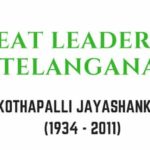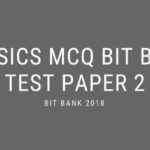Physics Objective Questions For Competitive Exams
PHYSICS MCQ’s TEST PAPER -1
Physics Objective Questions For Competitive Exams | Groups | Banks | RRB’s
Pokémon Legends: Z-A – Nintendo Switch 2
Q. Light waves propagates in the form
a) Transverse waves
b) Longitudinal waves
c) Both
a) Transverse waves
Q. Units of frequency
a) second/cycle
b) cycle/second
c) cycle/min
b) cycle/second
Q. If the amplitude of waves decreases with respect to time, then such waves are
a) Sound waves
b) Slow amplitude waves
c) Damping waves
c) Damping waves
Q. Maximum displacement of vibrating particle from its mean point known as
a) Amplitude
b) Acceleration
c) Magnitude
a) Amplitude
Q. Ultra sound wave used to scan the internal organs of the body is
a) Ultra X ray
b) Ultra scanning
c) Ultra Sonography
c) Ultra Sonography
Q. Sound through the solid is
a) Transverse waves
b) Longitudinal waves
c) Both
a) Transverse waves
Q. Transverse waves, pick odd
a) Solid
b) Liquids
c) Air
c) Air
Q. Humans can hear sound in range of
a) 10 Hz to 20,000 Hz
b) 20 Hz to 20,000 Hz
c) 20 Hz to 40,000 Hz
b) 20 Hz to 20,000 Hz
Q. Stationary waves carries energy from one point to another
a) YES
b) NO
b) NO
Q. Ultra Sonic waves can be generated in
a) Atom Bombarding
b) Atom Fusion
c) Piezueo electric effect
c) Piezueo electric effect
Q. The point where the density of the vibrating air molecules is maximum and its rarefaction is minimum
a) Amplitude
b) Rarefaction
c) Compression
c) Compression
Q. In the Phenomenon of resonance, the natural frequency of two bodies should be
a) Low
b) Equal
c) High
b) Equal
Q. Distance between any two successive compression or rarefaction are called
a) Wave length
b) Wave aptitude
c) Time period
a) Wave length
Q. Propagation of sound waves is proposed by
a) Joule
b) Robert Boyle
c) Newton
b) Robert Boyle
Q. Smallest unit to measure wavelength is
a) Angstrom
b) nm
c) mm
a) Angstrom
Q. Inaudible wave beyond 20Hz are
a) Infrasonic and Ultrasonic
b) Infrasonic
c) Ultrasonic
a) Infrasonic and Ultrasonic
Q. Speed of sound in free space is
a) 343 meters per second
b) 0
c) 300 meters per second
b) 0
Q. To get echo, minimum condition is
a) Both
b) Separation distance 16.5 mts
c) Time Interval between two sounds atleast 1/10th second
a) Both
Q. Scientific name of moon and study of moon is
a) Moon, Moonology
b) Selene, Selenology
c) Planetary, Astrology
b) Selene, Selenology
Q. The waves which doesn’t require any material medium for propagation called
a) Sound waves
b) X rays
c) Electromagnetic waves
c) Electromagnetic waves
Q. On 21st July 1969, Neil Armstrong landed on the moon for the first time. He followed by ?
a) Edwin Aldrin
b) Edwin jerff
c) Edwin Willam
d) None
a) Edwin Aldrin
Q. Sun is approximately how many kilometers away from the Earth ?
a) 60,000 Kms
b) 1 lakh kms
c) 150 million kms
d) None
c) 150 million kms
Q. Largest distances are expressed in units called ?
a) Light year
b) Kms
c) Million Kms
d) None
a) Light year
Note: Light year, it is distance travelled by light in one year
Q. Distance between Sun and Earth is ?
a) 10 light mins
b) 20 light mins
c) 30 light mins
d) 8 light mins
d) 8 light mins
Q. The Constellation which can seen during summer time in early night is ?
a) Great Bear
b) Orion
c) Leo Major
d) Cassiopeia
a) Great Bear
Note: Great Bear is also known as Ursa Major, Big Dipper or Sapatarshi
Q. The Constellation which can seen during winter time in late evenings ?
a) Great Bear
b) Orion
c) Leo Major
d) Cassiopeia
b) Orion
Note: Orion is also called as Hunter
Q. Brightest star in the sky is ?
a) Pole star
b) Sirius
c) Blinking star
d) None
b) Sirius
Q. The Constellation which can seen during winter time in northern sky ?
a) Great Bear
b) Orion
c) Leo Major
d) Cassiopeia
d) Cassiopeia
Q. Nearest star to the Earth ?
a) Sun
b) Alpha Star
c) Pole Star
d) None
a) Sun
Q. Mercury is nearest planet to Sun and also it is ?
a) Brightest Planet
b) Smallest Planet
c) Biggest Planet
d) None
b) Smallest Planet
Q. Mercury has ____ satellites ?
a) 2 satellites
b) 5 satellites
c) 1 satellites
d) No satellites
d) No satellites
Q. Venus is nearest planet to Earth and also it is ?
a) Brightest Planet
b) Smallest Planet
c) Biggest Planet
d) None
c) Biggest Planet
Q. Venus is called as ?
a) Morning star
b) Evening Star
c) Both
D) A or B
c) Both
Q. Venus has ____ satellites ?
a) 2 satellites
b) 5 satellites
c) 1 satellites
d) No satellites
d) No satellites
Q. Earth rotates from West to East and Venus Rotates ?
a) West to East
b) East to West
c) North to South
d) South to North
b) East to West
Q. From space, Earth looks like
a) Black Colour
b) Blue – Green Colour
c) Blue Colour
d) None
b) Blue – Green Colour
Note: Due to Reflection of light from water and landmass, Earth looks like Blue- Green Colour
Q. Mars is called as Red Planet, It has ?
a) 2 satellites
b) 5 satellites
c) 1 satellites
d) No satellites
a) 2 satellites
Q. Jupiter is largest planet of solar system, Its mass is about ?
a) 18 times of Earth
b) 118 times of Earth
c) 218 times of Earth
d) 318 times of Earth
d) 318 times of Earth
Q. Saturn is appear in ?
a) Reddish colour
b) Yellowish colour
c) Blue Colour
d) None
b) Yellowish colour
Q. Saturn is said have least dense among all planets, it density is less than ?
a) Mercury
b) Hydrogen
c) Water
d) Oxygen
c) Water
Note: Density of water: 997 kg/m³
Q. Plant Uranus Rotates form ?
a) West to East
b) East to West
c) North to South
d) South to North
b) East to West
Note: Both Venus and Uranus planets rotates from east to west
Q. Which of the following are called as inner planets ?
a) Mercury, Venus, Earth, Mars
b) Mercury, Venus, Earth, Mars and Jupiter
c) Jupiter, Saturn, Uranus, Neptune
d) Saturn, Uranus, Neptune and Pluto
a) Mercury, Venus, Earth, Mars
Q. Which of the following are called as outer planets ?
a) Mercury, Venus, Earth, Mars
c) Mercury, Venus, Earth, Mars and Jupiter
c) Jupiter, Saturn, Uranus, Neptune
d) Saturn, Uranus, Neptune and Pluto
c) Jupiter, Saturn, Uranus, Neptune
Q. Tail of comet always directed ?
a) Towards the Sun
b) Away from Sun
c) Both
d) None
b) Away from Sun
Q. Axis of the Earth is inclined to its orbital plane at angle of ?
a) 22.5⁰
b) 67.5⁰
c) 23.5⁰
d) 66.5⁰
d) 66.5⁰
Q. Halley’s comet appears after nearly every ?
a) 26 yrs
b) 56 yrs
c) 76 yrs
d) 96 yrs
c) 76 yrs
Q. First Indian Satellite ?
a) Apollo
b) Aryabhata
c) INSAT
d) IRS
b) Aryabhata
Q. In general Stars appears to move from ?
a) West to East
b) East to West
c) North to South
d) South to North
b) East to West
Q. Our Solar System consists of ?
a) 8 Planets, Asteroids, comets and meteors
b) 8 Planets
c) 9 Planets, Asteroids, comets and meteors
d) 9 Planets
a) 8 Planets, Asteroids, comets and meteors
Q. A body revolving around another body is called as ?
a) Meteors
b) Asteroids
c) Satellite
d) Constellations
c) Satellite
Read More: 1000+ MCQ Questions for Exams
Learn More
Link 1 – Physics | Biology | Indian History | T-History MCQ Questions Test papers
Link 2 – Buy/Downlaod Physics MCQ Bit Bank eBook
Link 3 – Free eBooks For Competitive Exams
Link 4 – Top Books for Competitive Exams
Link 5 – Download Quantitative and Aptitude Competitive Exams
For Complete GK/GS – Click Here
To Get Physics Questions with answers in PDF Format(Test Paper 1to5), Download fdaytalk ebooks
eBook Code: PHYSICS_MCQ
Link –> Physics multiple choice questions and answers pdf
For More Physics Test Papers – Physics MCQ for exams
#LetsMakePreparingForGovtJobsEasy
Physics Objective Questions For Competitive Exams



Several thanks for this specific information I was basically browsing all Search engines to discover it! 275405
541269 38833Some really beneficial data in there. Why not hold some sort of contest for your readers? 840675